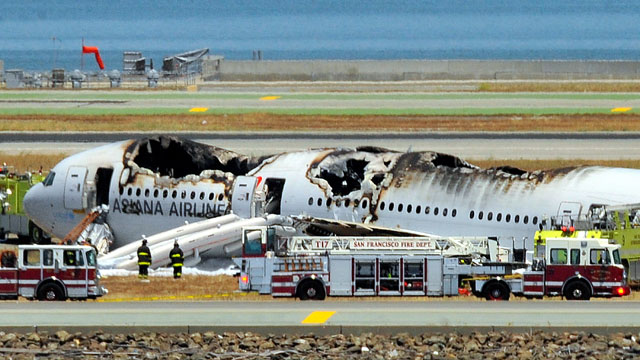Investigators are trying to determine why a Boeing 777 crash landed at SFO airport on Saturday, killing two passengers and injuring more than 180 others. Witnesses said the Asiana Airlines flight came in low, and that its tail appeared to hit the runway. The blackened airplane was engulfed in flames and much of its roof had been torn off. This is the first fatal accident involving a Boeing 777; the airlines said it did not appear to be a mechanical problem, but also declined to blame the pilot or the San Francisco control tower. We discuss the crash and what it means for commercial airline safety.
Eyewitness Video of the Crash
NTSB Findings on SF Plane Crash at a Glance
SAN FRANCISCO (AP) Asiana Flight 214 makes its final approach after a 10-hour flight that started in Shanghai and stopped in Seoul. A preliminary review of the crash by federal investigators turns up the following:
APPROACH PROCEEDS NORMALLY … the plane receives clearance from air traffic control to land without its instrument landing system. Visibility is about 10 miles with winds out of the southwest at 7 knots. There are no distress calls or requests for support in the air traffic control tapes that captured the discussion between a controller and the Asiana crew.
